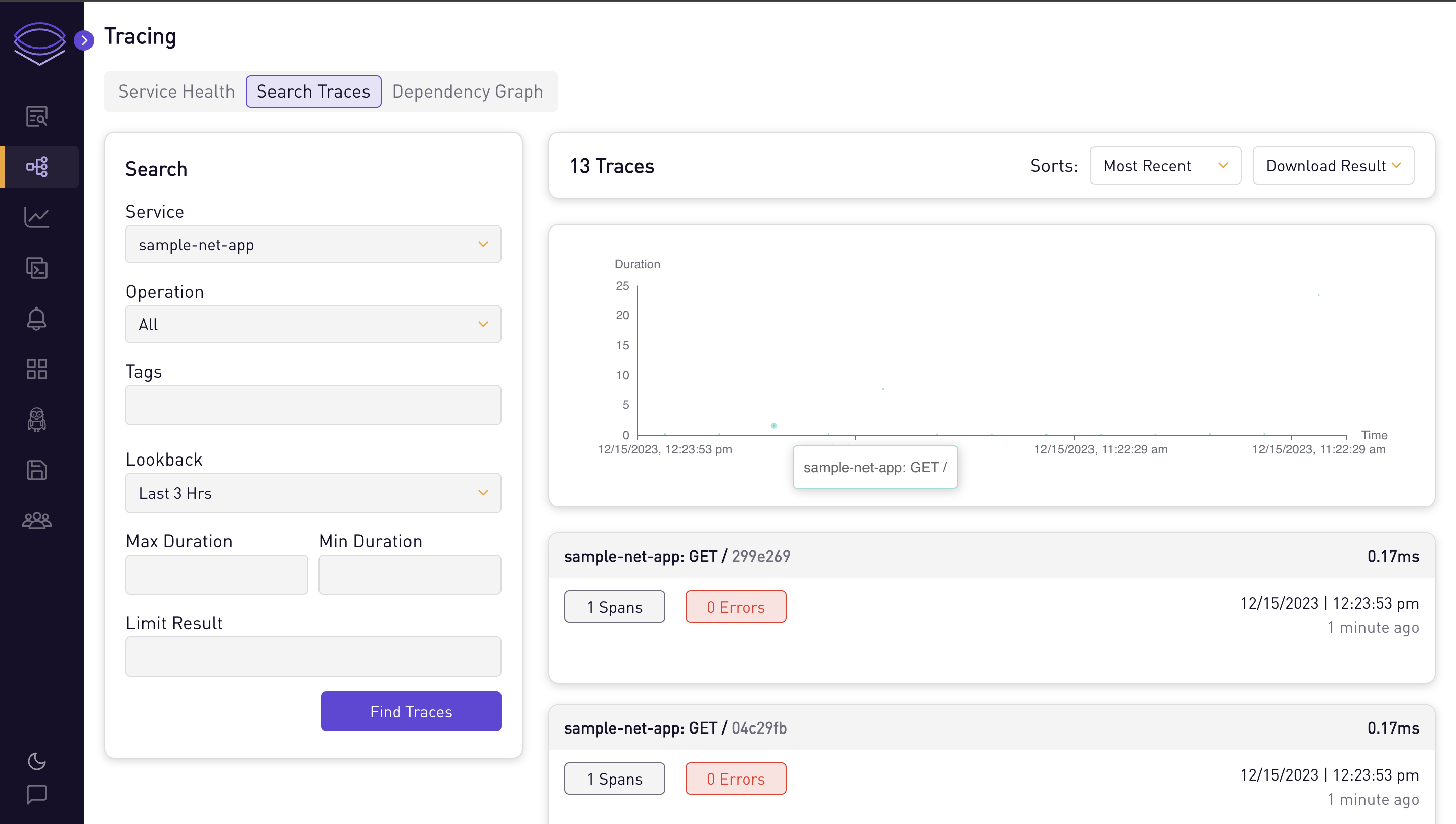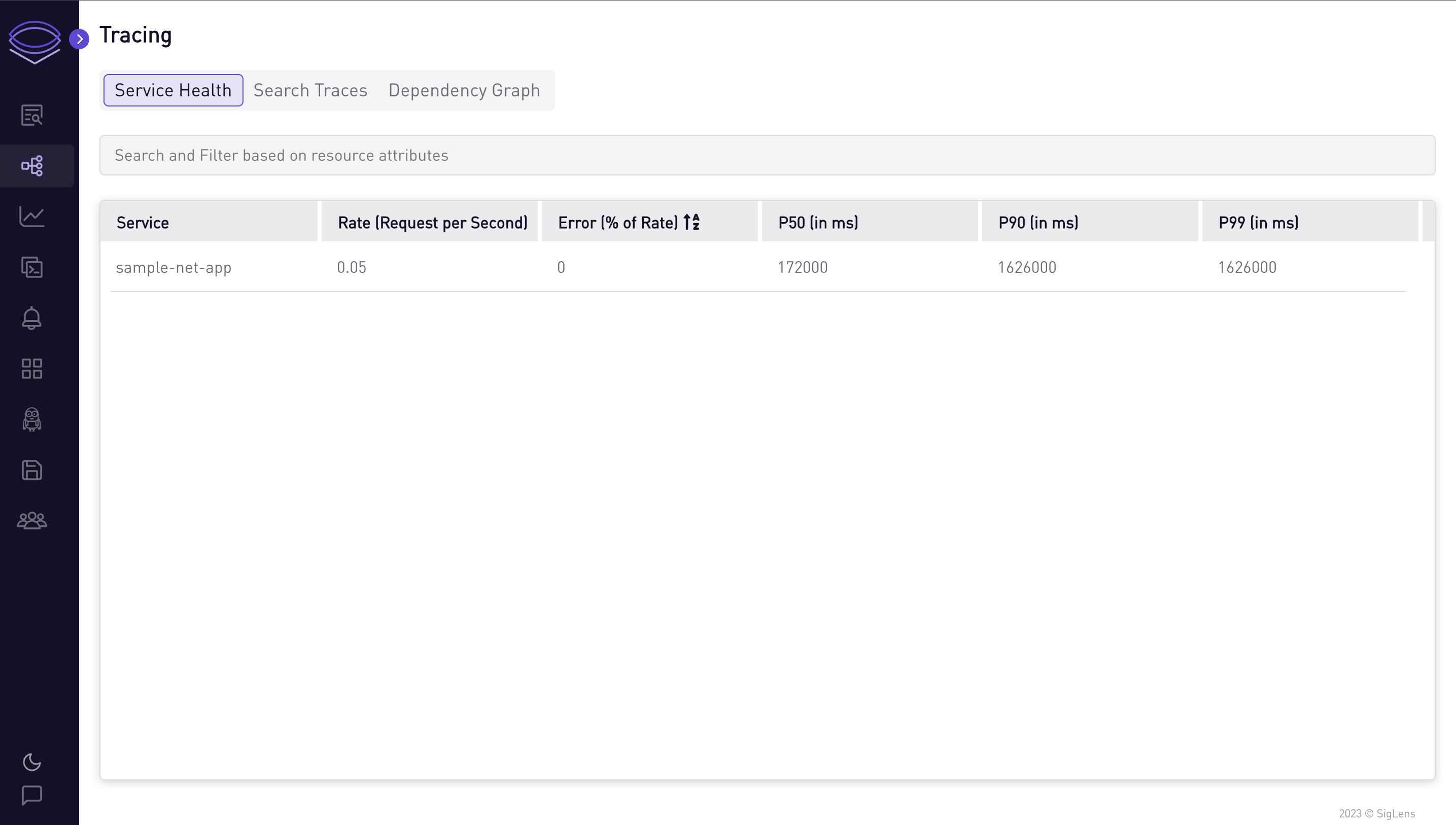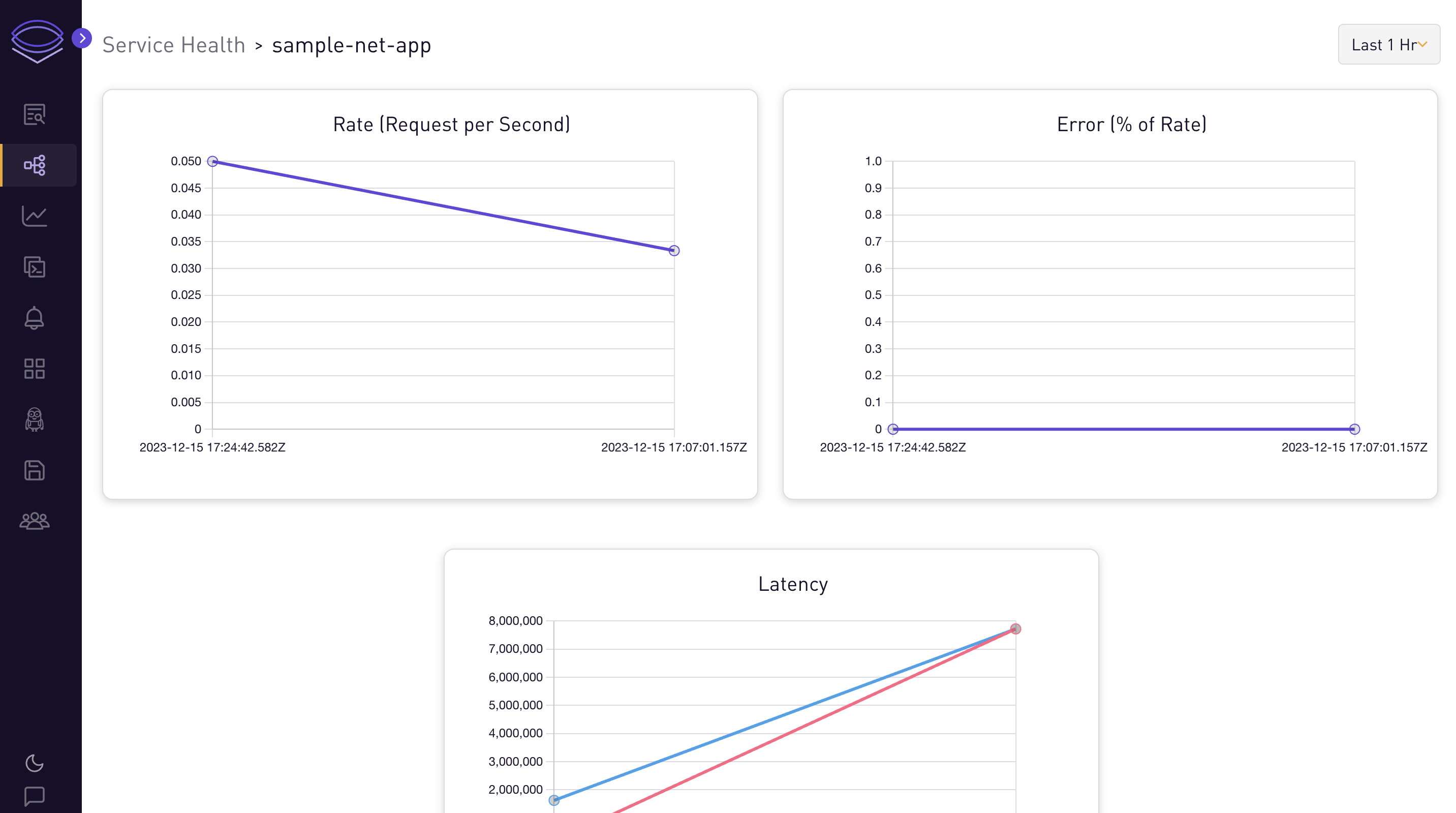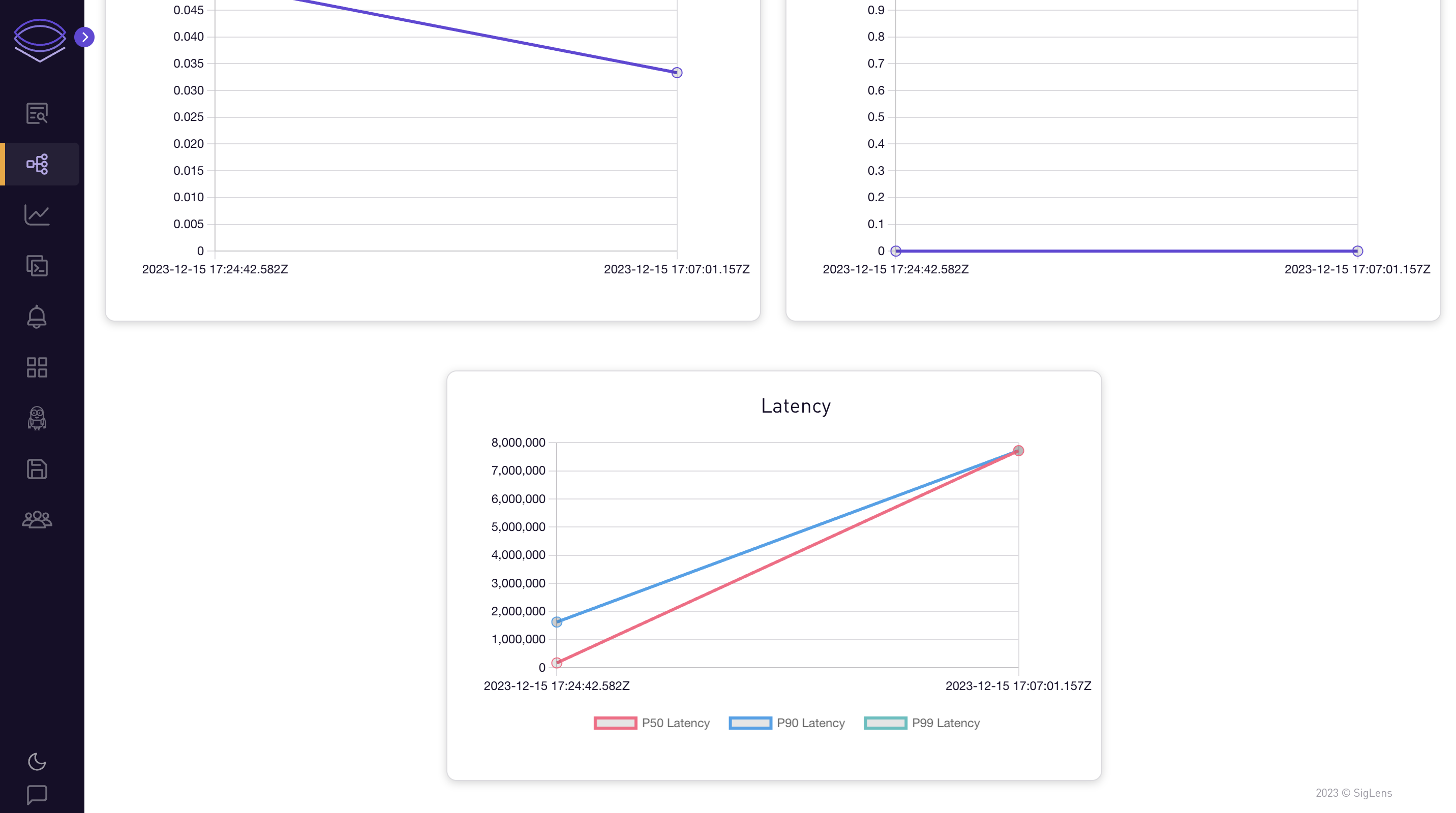.NET App
Auto-instrument sample .NET App for traces
In this tutorial, we will go through the steps to auto-instrument a .NET app to send traces to SigLens.
Prerequisites
- You need to have the .NET SDK installed. You can install
dotnetusing a package manager like homebrew or download it here.
Quickstart
Start SigLens:
curl -L https://siglens.com/install.sh | sh
Setup a .NET app:
mkdir dotnet-example
cd dotnet-example
dotnet new web
Replace the default Program.cs:
echo 'using OpenTelemetry.Exporter;
using OpenTelemetry.Trace;
var builder = WebApplication.CreateBuilder(args);
builder.Services.AddOpenTelemetry()
.WithTracing(tracing => tracing
.AddAspNetCoreInstrumentation()
.AddOtlpExporter()
);
var app = builder.Build();
app.MapGet("/", () => "Hello World!");
app.Run();' > Program.cs
Replace the default Properties/launchSettings.json:
echo '{
"$schema": "http://json.schemastore.org/launchsettings.json",
"profiles": {
"http": {
"commandName": "Project",
"dotnetRunMessages": true,
"launchBrowser": true,
"applicationUrl": "http://localhost:8080",
"environmentVariables": {
"ASPNETCORE_ENVIRONMENT": "Development"
}
}
}
}' > Properties/launchSettings.json
Install OpenTelemetry dependencies:
dotnet add package OpenTelemetry
dotnet add package OpenTelemetry.Exporter.OpenTelemetryProtocol
dotnet add package OpenTelemetry.Extensions.Hosting
dotnet add package OpenTelemetry.Instrumentation.Runtime
dotnet add package OpenTelemetry.Instrumentation.AspNetCore
dotnet add package OpenTelemetry.AutoInstrumentation
Run the app:
OTEL_METRICS_EXPORTER=none \
OTEL_LOGS_EXPORTER=none \
OTEL_EXPORTER_OTLP_ENDPOINT="http://localhost:8081/otlp" \
OTEL_EXPORTER_OTLP_PROTOCOL="http/protobuf" \
OTEL_SERVICE_NAME="my-service" \
dotnet run
Go to the app at http://localhost:8080 and refresh the page a few times (you should see Hello World!) to send traces to SigLens.
After about 10 seconds, you should see the traces on SigLens on http://localhost:5122 then going to Tracing -> Search Traces and clicking the Find Traces button.
More Details
For auto-instrumenting your own .NET app, you'll follow a similar procedure. In particular, you will:
- Add the following to your program:
using OpenTelemetry.Exporter;
using OpenTelemetry.Trace;
var builder = WebApplication.CreateBuilder(args);
builder.Services.AddOpenTelemetry()
.WithTracing(tracing => tracing
.AddAspNetCoreInstrumentation()
.AddOtlpExporter()
);
var app = builder.Build();
- Install OpenTelemetry dependencies into your project:
dotnet add package OpenTelemetry
dotnet add package OpenTelemetry.Exporter.OpenTelemetryProtocol
dotnet add package OpenTelemetry.Extensions.Hosting
dotnet add package OpenTelemetry.Instrumentation.Runtime
dotnet add package OpenTelemetry.Instrumentation.AspNetCore
dotnet add package OpenTelemetry.AutoInstrumentation
- Run your app using OTEL environment variables:
OTEL_METRICS_EXPORTER=none \
OTEL_LOGS_EXPORTER=none \
OTEL_EXPORTER_OTLP_ENDPOINT="http://localhost:8081/otlp" \
OTEL_EXPORTER_OTLP_PROTOCOL="http/protobuf" \
OTEL_SERVICE_NAME="my-service" \
dotnet run
Once you're on the Tracing tab of SigLens, you can search the traces and see health metrics and graphs for each service.



